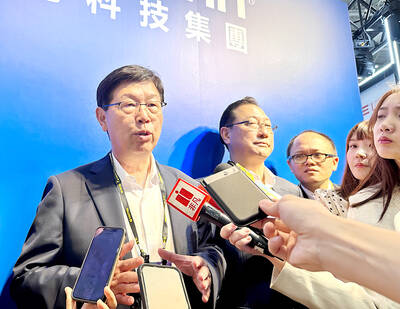and GENEVA, Switzerland
The COVID-19 pandemic has brought the global economy to a standstill and plunged the world into a recession that would be “way worse” than the global financial crisis more than a decade ago, the head of the IMF said on Friday, calling it “humanity’s darkest hour.”
IMF managing director Kristalina Georgieva, speaking at a rare joint news conference with the leader of the WHO, called on advanced economies to step up their efforts to help emerging markets and developing countries survive the economic and health impact of the pandemic.
“This is a crisis like no other,” Georgieva told about 400 reporters on a video conference call. “We have witnessed the world economy coming to a standstill. We are now in recession. It is way worse than the global financial crisis” of 2008 to 2009.
World Bank president David Malpass echoed her outlook in a post on LinkedIn, writing: “Beyond the health impacts from the COVID-19 pandemic, we are expecting a major global recession.”
Georgieva said the IMF was working with the World Bank and the WHO to advance their call for China and other official bilateral creditors to suspend debt collections from the poorest countries for at least a year until the pandemic subsides.
She said China had engaged “constructively” on the issue, and the IMF would work on a specific proposal in coming weeks with the Paris Club of creditor nations, the G20 major economies and the World Bank for review at the annual spring meetings, which are to be held online in about two weeks.
In his posting, Malpass said a debt standstill could begin on May 1, providing added liquidity for the poorest countries as they battle the disease.
During the suspension period the World Bank and the IMF could evaluate the sustainability of those countries’ debt, and the possible need for a debt reduction by official creditors and commercial creditors, he said.
FUND OUTFLOWS
Emerging markets and developing economies have been hard hit by the crisis, Georgieva said, adding that nearly US$90 billion in investments had already flowed out of emerging markets, far more than during the financial crisis.
Some countries are also suffering from sharp drops in commodity prices.
More than 90 countries — nearly half the IMF’s 189 members — have asked for emergency funding from the IMF to respond to the pandemic, she said.
The IMF and the WHO have called for emergency aid to be used mainly to strengthen health systems, pay doctors and nurses, and buy protective gear.
Georgieva said the IMF stood ready to use as much of its “war chest” of US$1 trillion in financing capability as needed.
The IMF has begun disbursing funds to requesting countries, including Rwanda, she said.
“This is, in my lifetime, humanity’s darkest hour — a big threat to the whole world — and it requires from us to stand tall, be united, and protect the most vulnerable of our fellow citizens,” she said.
She said central banks and finance ministers had already taken unprecedented steps to mitigate the effects of the pandemic and stabilize markets, but more work was needed to keep liquidity flowing, especially to emerging markets.
NEW LIQUIDITY
To that end, the IMF’s board in coming days would review a proposal to create a new short-term liquidity line to help provide funds to countries facing problems.
Georgieva also urged central banks and particularly the US Federal Reserve to continue offering swap lines to emerging economies.

Taiwan Transport and Storage Corp (TTS, 台灣通運倉儲) yesterday unveiled its first electric tractor unit — manufactured by Volvo Trucks — in a ceremony in Taipei, and said the unit would soon be used to transport cement produced by Taiwan Cement Corp (TCC, 台灣水泥). Both TTS and TCC belong to TCC International Holdings Ltd (台泥國際集團). With the electric tractor unit, the Taipei-based cement firm would become the first in Taiwan to use electric vehicles to transport construction materials. TTS chairman Koo Kung-yi (辜公怡), Volvo Trucks vice president of sales and marketing Johan Selven, TCC president Roman Cheng (程耀輝) and Taikoo Motors Group

Among the rows of vibrators, rubber torsos and leather harnesses at a Chinese sex toys exhibition in Shanghai this weekend, the beginnings of an artificial intelligence (AI)-driven shift in the industry quietly pulsed. China manufactures about 70 percent of the world’s sex toys, most of it the “hardware” on display at the fair — whether that be technicolor tentacled dildos or hyper-realistic personalized silicone dolls. Yet smart toys have been rising in popularity for some time. Many major European and US brands already offer tech-enhanced products that can enable long-distance love, monitor well-being and even bring people one step closer to

RECORD-BREAKING: TSMC’s net profit last quarter beat market expectations by expanding 8.9% and it was the best first-quarter profit in the chipmaker’s history Taiwan Semiconductor Manufacturing Co (TSMC, 台積電), which counts Nvidia Corp as a key customer, yesterday said that artificial intelligence (AI) server chip revenue is set to more than double this year from last year amid rising demand. The chipmaker expects the growth momentum to continue in the next five years with an annual compound growth rate of 50 percent, TSMC chief executive officer C.C. Wei (魏哲家) told investors yesterday. By 2028, AI chips’ contribution to revenue would climb to about 20 percent from a percentage in the low teens, Wei said. “Almost all the AI innovators are working with TSMC to address the

FUTURE PLANS: Although the electric vehicle market is getting more competitive, Hon Hai would stick to its goal of seizing a 5 percent share globally, Young Liu said Hon Hai Precision Industry Co (鴻海精密), a major iPhone assembler and supplier of artificial intelligence (AI) servers powered by Nvidia Corp’s chips, yesterday said it has introduced a rotating chief executive structure as part of the company’s efforts to cultivate future leaders and to enhance corporate governance. The 50-year-old contract electronics maker reported sizable revenue of NT$6.16 trillion (US$189.67 billion) last year. Hon Hai, also known as Foxconn Technology Group (富士康科技集團), has been under the control of one man almost since its inception. A rotating CEO system is a rarity among Taiwanese businesses. Hon Hai has given leaders of the company’s six